The International Younger Chemists Network (IYCN) was officially launched at the 49th IUPAC General Assembly in São Paulo, Brazil, this summer. The IYCN wants to “create a unified global network of young chemists to communicate, collaborate, educate, and mentor”.
 Dr. Paula C. P. Bueno (Adviror), Sao Paulo State University, Brazil, Dr. Sophie Carenco (Chair of the Governance subcommittee), UPMC/CNRS/Collège de France, Paris, Christine Dunne (Advisor), Colorado State University, Fort Collins, CO, USA, Dr. Lori Ferrins (Chair of the Public Outreach subcommittee), Northeastern University, Boston, MA, USA, Evijola Llabani (Vice-Chair of IYCN), University of Illinois Urbana-Champaign, Champaign, IL, USA, Nnanake-Abasi Offiong (Chair of Social Media subcommittee), University of Uyo, Nigeria, and Professor Ilya V. Vorotyntsev (Chair), Nizhuy Novgorod State Technical University, Russia, talked about the vision and first steps of this new organization with Dr. Vera Koester for ChemViews Magazine.
Dr. Paula C. P. Bueno (Adviror), Sao Paulo State University, Brazil, Dr. Sophie Carenco (Chair of the Governance subcommittee), UPMC/CNRS/Collège de France, Paris, Christine Dunne (Advisor), Colorado State University, Fort Collins, CO, USA, Dr. Lori Ferrins (Chair of the Public Outreach subcommittee), Northeastern University, Boston, MA, USA, Evijola Llabani (Vice-Chair of IYCN), University of Illinois Urbana-Champaign, Champaign, IL, USA, Nnanake-Abasi Offiong (Chair of Social Media subcommittee), University of Uyo, Nigeria, and Professor Ilya V. Vorotyntsev (Chair), Nizhuy Novgorod State Technical University, Russia, talked about the vision and first steps of this new organization with Dr. Vera Koester for ChemViews Magazine.
What gave you the idea to create the IYCN?
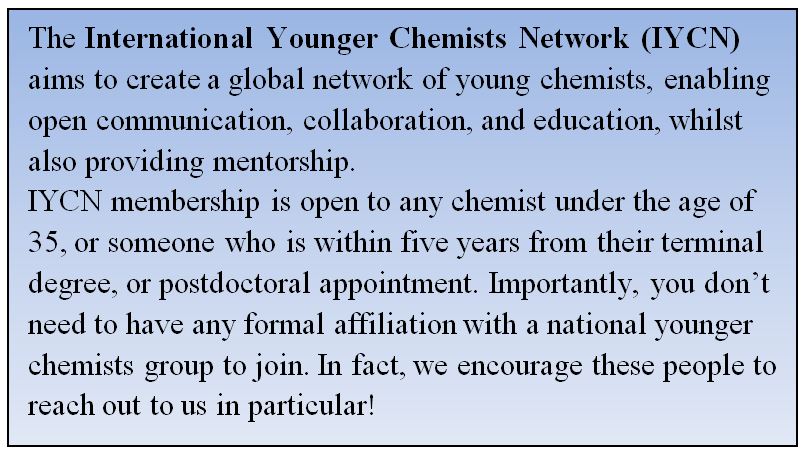
Lori Ferrins: Professional exchanges between scientists had been taking place for a number of years. However, this was predominantly between the USA and Europe as seen in the Younger Chemists Crossing Borders exchange program. Although this was an incredibly beneficial experience for those involved, it became clear that there was not a platform through which younger chemists could interact on a global scale.
Nnanake-Abasi Offiong: A key motivation for the establishment of the IYCN was the quest for the active involvement of younger chemists from all over the world, in particular, the underrepresented regions such as Africa.
Sophie Carenco: Also, the IYCN was the next logical step moving forward to connect younger chemists after the success of other recently established networks, such as the European Young Chemist’s Network (EYCN).
How did it start?
Ilya V. Vortotyntsev: The idea of the IYCN started during a meeting of young chemists at the ACS National Meeting in Boston in 2015. During the 6th EuCheMS Chemistry Congress held in Seville in 2016, it was unofficially launched and this is when I became involved. As the newly elected Chair, I am excited for the future of this organization!
How is the IYCN organized?
Lori Ferrins: IYCN currently consists of a Chair (Ilya) and Vice-Chair (Evijola) who were elected at the IUPAC World Chemistry Congress by representatives from various countries. There are also five steering committees in the fields of Governance (chaired by Sophie), Conference Presence (currently vacant – we are seeking enthusiastic candidates), Public Outreach (chaired by Lori), Finance (Felicia), and Social Media (Nnansake-Abasi). Each of these consists of four to five members who will help to drive IYCN into the future.
We are currently working to develop an advisory board that will consist of established chemists with an interest in mentoring younger chemists. We are working to ensure that this group of people will be diverse and represent all aspects of the worldwide chemistry community. If there is anyone interested in joining our advisory board I would strongly encourage them to contact us at [email protected].
How do you meet?
Lori Ferrins: The leadership team typically meets once a month via Skype. In addition, we see each other at international conferences, such as the IUPAC World Congress.
What are the key activities within the IYCN?
Christine Dunne: During the IUPAC World Chemistry Congress in Brazil, we hosted a symposium and networking session. This allowed young chemists to learn from leaders in the field about green chemistry practices and intellectual property rights, two extremely important topics.
Paula C. P. Bueno: This was a hugely successful event and was the first official IYCN meeting at an IUPAC conference.
Christine Dunne: In the future, we plan to have a full-day symposium organized at all upcoming IUPAC World Chemistry Congresses. The next will be at IUPAC2019 in Paris, France.
Christine Dunne: Our most recent project, prior to the official launch, was an exchange hosted by the German Chemical Society’s (GDCh) JungChemikerForum (JCF) during their 2017 meeting in Mainz, Germany. The IYCN, with the help of the GDCh and the JCF, was able to provide five students from normally underrepresented countries at international chemistry conferences with a grant to attend this meeting. In the future, we hope to continue exchanges such as this one on an even larger global platform.
Nnanake-Abasi Offiong: Two students from Nigeria received sponsorship to attend the conferences. In Chukwuebuka Onyema’s case, we covered his registration, travel, and accommodation costs. Samuel Ogunniyi was the recipient of the Best Undergraduate Poster Presentation, and IYCN covered his transportation and conference registration. The IYCN also sponsored the Best Undergraduate Poster Presentation Awards during the ACS-sponsored Future Scientists Symposium held in May 2017 in Nigeria. The award presentation was featured in the June issue of the IYCN newsletter. We are hoping to be able to expand our support in the coming months through fundraising efforts and corporate sponsorship.
Christine Dunne: We do, however, know that physical exchange can be costly and challenging for some early-career chemists. Owing to this, we hope to provide virtual platforms for young chemists to share their experiences and connect with other young chemists.
How many countries are currently involved? How will you expand?
Lori Ferrins: We are planning to expand our network in a number of ways. The first is by removing some of the real and perceived barriers to interacting with the chemistry community and the wider community as a whole. There are obviously logistical challenges to communicating worldwide when we consider the number of countries and time zones that are involved. As such, social media use and our online presence will be growing in the coming months so that we are more accessible. We are also working to make it easier for chemists to interact with the general public. We are organizing a database of resources, with a particular focus on experiments and training materials that will facilitate positive interactions between our members and the general public. One way in which we are hoping to achieve this is through the development and translation of a database of ‘how to’ guides for interactive, hands on experiments using everyday products that can easily be done with the local community.
How and why are you connected to IUPAC?
Evijola Llabani: IUPAC was identified as a great mentor society that would help us create an international platform for young chemists. We believe that we share similar visions, namely, connecting chemists worldwide and contributing to the public appreciation of chemistry. The IUPAC members have been fantastic mentors and supporters, so we are ecstatic to work closely with them throughout this process. It was very gratifying to sign the memorandum of understanding with them this year, and that gives me great hope for the future of the IYCN.
Nnanake-Abasi Offiong: IUPAC is the hub for chemists worldwide and provides a common language for chemistry. It will certainly assist in opening up avenues for new contacts. For example, African delegates who participated in IYCN activities during the 2017 IUPAC World Chemistry Congress indicated an interest in collaborating with the IYCN.
Christine Dunne: In the April issue of Chemistry International, an article was featured with a specific endorsement from IUPAC Secretariat Richard Hartshorn.
Ilya V. Vortotyntsev: In order to truly involve all countries, we are closely aligned and collaborate with IUPAC, we are not a part of IUPAC. This gives us the opportunity and freedom to involve participants from countries who are not members of IUPAC.
Who can become a member and how?
Lori Ferrins: IYCN membership is open to any chemist under the age of 35 or someone who is five years from their terminal degree. Every chemist needs support and a network. You don’t need to have any formal affiliation with a national younger chemists group. In fact, not all countries have such a group and we are keen to reach out to these people as a priority. Our goal is to support all younger chemists throughout the world. If you are interested in getting involved I would urge you to reach us at [email protected]. If you want to follow what we are doing, please like us on Facebook (@IYCN.global) or Twitter (@IntlYoungerChem). We are constantly looking for highly motivated people to help drive this organization forward in multiple ways. As mentioned previously, we have five steering committees in the fields of Governance, Conference Presence, Public Outreach, Finance, and Social Media who are always excited to have new ideas and projects to work on. Everybody is welcome to join and work together with us.
Christine Dunne: Yes, please do not hesitate to contact us about anything! We are here to help you develop not only professionally, but also personally. We look forward to interacting with you in our constantly growing network.
Evijola Llabani: We are excited about the IYCN, and we hope that you would consider joining and supporting us. Together we can push the boundaries of chemistry and create a better cohesive future for generations to come.
How does the IYCN fit into the work of the national groups and the EYCN? Is the EYCN still relevant?
Lori Ferrins: The IYCN and EYCN are two separate organizations with different focuses, so, yes, the EYCN is definitely relevant.
Sophie Carenco: The two networks are complementary to each other. The EYCN is already a very active network.
Lori Ferrins: A number of people who were, and still are, involved with the IYCN from the very beginning have been active members within the EYCN. Their experience has been invaluable in getting the IYCN into its current position. The goal of the IYCN though is much broader, and we will work closely with younger chemists’ groups internationally so that we can reach as many people as possible.
Evijola Llabani: We intend to be exactly what our name implies, an international young chemists network, which is eager to collaborate with various national groups such as the EYCN or national young chemists’ groups such as the Young Chemists Committee (YCC) of ACS or the JCF of the GDCh. A part of our leadership team has served or is currently serving within other societies so that we can ensure strong collaboration ties with these groups and advance the development of IYCN. In the end, we all share one goal: to connect young chemists and provide resources for them.
And how did you get involved?
Christine Dunne: I got involved during the International Year of Chemistry in 2011. The past ACS President Nancy Jackson provided an opportunity for young chemists to travel to Jordan for the International Conference for Young Chemists. It was at this conference that I first presented my undergraduate research. I received this opportunity after participating in the ACS Leadership Development Course recommend by my local undergraduate chapter at Northeastern University.
I am incredibly thankful for these opportunities and am excited about the development of the many international opportunities for younger chemists around the world stemming from these collaborations and now, IYCN.
Lori Ferrins: Having completed my Ph.D. in Australia I was fortunate to have the support from the Royal Australian Chemical Institute (RACI), in particular, the Chemistry and Chemical Biology Division, to attend conferences and to build my network. When I moved to Boston to begin my postdoctoral research position I joined the Northeast Section of the ACS’ Younger Chemists Committee (NSYCC) who sent me on an exchange to Europe, which has led to my involvement in the IYCN. Without the support of these organizations who engage with younger chemists, I don’t believe that I would have become involved with such an important program.
Nnanake-Abasi Offiong: I was part of the team in Nigeria that organized a series of activities targeted towards younger chemists during the International Year of Chemistry in 2011. At the ACS National Meeting in Boston in 2015, I was very interested in joining colleagues from other countries to initiate action plans for the official launch of the IYCN and its formal affiliation with IUPAC. I believe that a platform for stronger collaboration amongst young chemists will assist in overcoming some global challenges.
Evijola Llabani: I serve on the national YCC board. In collaboration with the International Activities Committee (IAC) of the ACS, I organized the Boston meeting of young chemists from different countries in 2015. During that meeting, we decided to create a task force to help pave the path for the IYCN to be established as an autonomous international society, without being under any nation’s professional societies’ umbrella.
Paula C. P. Bueno: I became involved with IYCN activities during the 250th ACS National Meeting in Boston in 2015. During that year, I went to the USA because I was selected as a SciFinder Future Leader in Chemistry, which also included participation in the ACS meeting. In 2015, I was the only Latin American representative, more precisely, a Brazilian Ph.D. student. Gratefully, I was invited to take part in the first IYCN brainstorming session, where we also discussed the possibility of launching the IYCN officially during the 46th WCC and IUPAC 49th General Assembly in São Paulo, Brazil, which became a reality after two years of hard work and preparation.
Sophie Carneco: I was selected in 2015 to participate in the Young Chemists Crossing Border (YCCB) program, which is an exchange between young chemists in Europe and the US. Earlier in the same year, I also participated as a young scientist at the Lindau Nobel Laureate Meeting in Germany where we discussed global issues and opportunities for young scientists to make a better world. As an individual, this seems impossible. But as a group, there is hope! The brain-storming session in Boston made me realize that the IYCN could really make a difference, not only for its members but for our society as well. I was very keen to join in, and recent events in 2016 and 2017 made me even keener to keep pushing for an open-minded community of chemists that can reach across borders.
Ilya V. Vorotyntsev: I got involved with the European Young Chemist Network in 2008. During this time, we established a number of international projects and I was one of the first participants of the Young Chemists Crossing Borders Program. It was during the 6th EuCheMS Chemistry Congress, which was held in Seville in 2016, that I became directly involved in the IYCN activities. It is because our world is increasingly volatile, uncertain, complex, and ambiguous that we need to support our younger chemists so that they can achieve their full potential.
How do you see your role as a young chemist in the global chemistry community/in the world?
Christine Dunne: As a young chemist in a global society I see it as my duty to educate and expand the knowledge of international younger chemists. Chemists are often restricted by borders. I hope that the IYCN can erase these borders in chemists’ minds and help to bring young people from all over the world together by using the common language of chemistry.
Lori Ferrins: I feel that it is my responsibility to help ensure that all of the voices of my peers can be heard and that we support them in any way that we can.
Evijola Llabani: I am an international student from Albania obtaining my Ph.D. in the USA. We see more and more students studying in foreign countries. Many chemical companies are expanding their global presence, thus creating a market that incentivizes the need for international chemists and increases the collaboration between different educational systems. The future of chemistry is global, and I believe that each of us with experiences abroad will aid in shaping it.
Paula C. P. Bueno: After my first contact with the IYCN activities in Boston in 2015, I came back to Brazil with the feeling that I should do my best to increase the representation of Brazilian and other Latin American young chemists in the global science community. Although we are underrepresented countries, we are working hard to make science of excellence: we have talented students and researchers, very nice and well-equipped laboratories, as well as lots of local and global challenges to deal with. However, the participation of our young scientists in the global science community is still very incipient. I do believe that knowledge has to be shared and that science is essential to support all aspects of life. I really hope to be able to contribute to the professional and personal development of other young chemists from my country and abroad.
Sophie Carenco: As a student and in the years following, I received a lot from France, my home country: a high-level education, opportunities for travel and personal development, and now a job as a researcher. Not all were given such opportunities: I would like to promote the case of young scientists – chemists in particular – by helping to educate our politicians on the importance of supporting education, research, and development. This goes along with improving the image that people have of chemists and chemistry. This also means finding ways to better explain the added value we bring to society and discussing with policymakers how to improve the overall situation.
Thank you very much for sharing these thoughts.
Sophie Carenco: A final remark: The IYCN’s next general assembly will likely be in Paris in July 2019 and should gather an unprecedented group of highly motivated young chemists. You should get in touch with us today to learn more and, maybe, find a way to contribute!
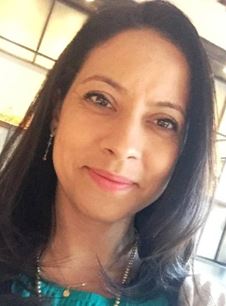 |
Paula C. P. Bueno obtained her Ph.D. in organic chemistry from São Paulo State University (UNESP), Brazil, in 2015. She did postdoctoral research at the same institute from 2016 to 2017, and since 2017 at the University of Leiden, The Netherlands. Her work focuses on plant metabolomics.
|
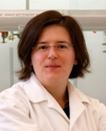 |
Sophie Carenco graduated from Ecole Polytechnique, Palaiseau, France, in 2008, and obtained her Ph.D. from the University P. & M. Curie, Paris, France, in 2011. From 2012 to 2013, she was a postdoctoral fellow at Lawrence Berkeley National Lab, Berkeley, CA, USA. In 2014, she joined CNRS as a researcher in the Laboratoire de Chimie de la Matière Condensée de Paris (LCMCP), associated with UPMC and Collège de France. She works on novel synthetic routes of exotic nanomaterials for energy-relevant challenges such as CO2 valorization. Selected Awards
|
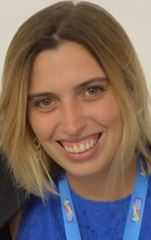 |
Christine Dunne gained her Bachelor of Science in Chemistry from Northeastern University, Boston, MA, USA, in 2013, and is currently doing her Ph.D. at Colorado State University, Fort Collins, CO, USA, working on the development of histone deacetylase inhibitor largazole and a complex library of analogues for therapeutic utility.
|
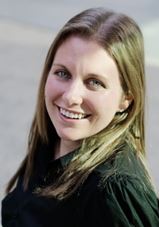 |
Lori Ferrins gained her Bachelor of Medicinal Chemistry (1st class Honours) from La Trobe University, Melbourne Victoria, Australia, and her Ph.D. from the Monash Institute of Pharmaceutical Sciences, Parkville, Victoria, Australia, in 2015. After a postdoctoral stay at Northeastern University, Boston, MA, USA, she is now a Research Assistant Professor there.
Selected Awards
|
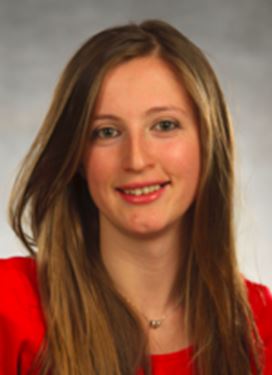 |
Evijola Llabani, born in Albania, received her B.S. in Chemistry and Biology in 2013 from St. John’s University in Queens, NY, USA. She is currently doing her Ph.D. as a Cancer Scholar for Translational and Applied Research (C*STAR) fellow at the University of Illinois Urbana-Champaign, Champaign, IL, USA, working on target identification and validation of a potent anticancer compound in the laboratory of Professor Paul J. Hergenrother. Selected Awards
|
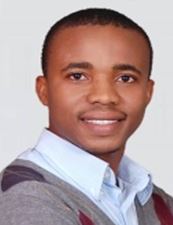 |
Nnanake-Abasi Offiong received his B.Sc. in Chemistry in 2011 and M.Sc. in Environmental Chemistry in 2015 from the University of Uyo, Nigeria. He is currently a Ph.D. student at the University of Uyo. Selected Awards
|
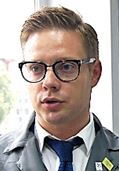 |
Ilya Vorotyntsev received his Ph.D. in Physical Chemistry from Lobachevsky University, Nizhny Novgorod, Russia, in 2006. After having worked several years in industry, he joined Nizhny Novgorod State Technical University n.a. R.E. Alekseev (NNSTU) in 2007. His research interests are in the area of physical chemistry and materials science, including membrane gas separation, IR spectroscopy, GS and GCMS, hybrid and integrated processes, and polymer science. In 2015, he was appointed Professor at NNSTU and founded the Laboratory of the Membrane and Catalytic Processes founded by the Russian Science Foundation. Selected Awards
|
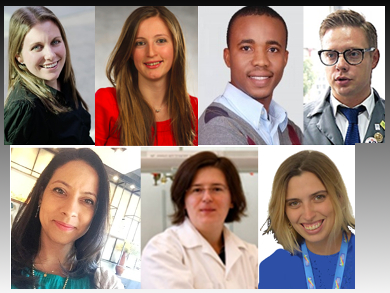




Any idea on small scale project in chemistry either in inorganic or organic? which can be set up in developing countries for commercial reasons/development/humanity etc.?
Hi Thayumanavar – our Public Outreach team are currently working on a series of experiments that can be performed using everyday items and are written using non-technical language. As you may understand this is a massive undertaking (we are also working to translate the experiments to languages other than English), I would encourage you to check out the IYCN webpage for updates!